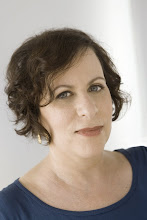How Twitter Can Help Photographers – Scott Bourne

PDN Photo Plus Expo
Scott Bourne, founder of Scott Bourne Media Group, has been using Twitter https://twitter.com/since its inception and for the last year he has been successfully using it to sell his wildlife photography prints http://scottbourne.com/
http://photodiary.photodiary.com/
He had a plethora of information to impart on how to navigate and use Twitter to its full potential in relation to marketing and selling photography.
He began with a couple of statistics:
200million users on Twitter putting up 50 million tweets put per day!
The “traction point” is around 9 months– this is when you should begin to reap the rewards of your tweeting (if you follow the basic guidelines and use Twitter efficiently)
He then went on to say that in order to promote your business well as a photographer on Twitter, there are a few basic guidelines such as:
Have a goal and know your objectives.
Know who your audience is.
Be concise with content – avoid “fluff” If its business then stick to business related tweets – i.e. don’t mix it with personal stuff (you can always start another Twitter account for personal/chatty tweets).
Make sure your design reflects your style – i.e. put up your images in the background design and change frequently.
Brand yourself effectively by using a profile image of yourself as opposed to one of your images. “People respond more to faces”. Ensure that you have all the relevant professional information in your profile set up – business name, email, website,, blog.
Interact with the photography community you want to part of – have a voice – follow all the people/businesses that you have a commonality with such as connect with photographers, photo editors, curators, art buyers, photography magazine’s etc.. Connect to the photography lists. This will help to increase your profile on Twitter.
Interlink your Twitter account with Face Book, LinkedIn, Flickr, your website, blog and other social media groups you are connected to, to ensure a wider audience.
If its your first foray into Twitter land, then ease your way in gradually by “listening and learning the language” of the communities your want to be involved in. “Get the feel of how it works” Don’t go blasting in there, pushing your ware’s as soon as you sign up. Build up a relationship by offering advice, tips or share contacts with others in the community and hopefully they will begin to reciprocate. “put others ahead of yourself” Scott Bourne
Establish credibility within your community first by re-tweeting others tweets if you find them valuable. Have a conversation with other photographers you link with, about work, the business etc. Ask questions.
Every day you use Twitter, you should see your followers growing in numbers. If you don’t then you need to re-evaluate how you are using your account to help increase your followers.
According to Scott Bourne, the most effective times each day to reach your chosen audience in the US are:
6am Pacific Time – 9am Eastern Standard Time
4pm Pacific Time – 7pm Eastern Standard Time
(Adjust accordingly to the countries that are relevant to you)
This is “real time environment” so its important that you are on there at the most effective times in order to interact with your community. Whatever you are promoting in the morning, then repeat the tweet(s) later in the day. This should ensure that you are reaching your desired audience at all times.
To find out how to effectively sell your work on Twitter, Scott recommended that you check out certain sites to see how well they do it:
www.jetblue.com
www.opgear.com
www.pictureline.com/
He then went on to tell us how he sold out of 100 limited edition prints in just 8 months (at $400 per print – you do the math!) and he said himself “I take photo’s of birds….who really needs photo’s of birds?!” The reason he sold the prints was because he “told a story” about how he took the photograph in question and how it had actually taken him 13 years of going to a place in New Mexico (sic), to capture. He linked the tweets to his blog. And, that was the story that captured everyone’s attention (and their wallets!). So, think of a story that will capture’s the community’s imagination and see how it works out. I know that I will try this for Jason Florio’s fine art prints gallery!! http://www.floriophoto.com/#/fine%20art%20print%20sales/black%20+%20white%20collection/1
Scott finished with a re-cap on the seminar and to say:
Be patient – don’t expect success to happen overnight (remember the ‘9 month traction time’).
Listen and build your community slowly – “everyone wants to be a rock star but remember you have to learn the chords too”
Don’t just try to attract a large audience with people who are not relevant to your business and goals.
Ask questions and answer them. Be a voice in your community.
Always respond to messages – its only 140 characters maximum!
Ok, I’m off to get my tweet on!!
Helen Jones
Follow Helen Jones & Jason Florio and their journey around The Gambia in 2009 - a 930km walk with 3 Gambians, two donkeys and a cart! Award-winning photography and road stories:
http://930kmafricanodyssey.tumblr.com/
Follow us on Twitter:
http://twitter.com/#!/hellyjonesphoto
https://twitter.com/floriophotoNYC
Labels: helen jones, jason florio, marketing, PDN PhotoPlus, scott bourne media group, tweets, twitter







































